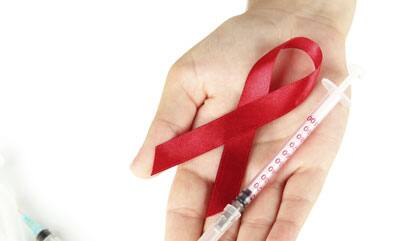London: The vaccine for HIV being developed by the Norwegian vaccine company Bionor Pharma could soon be a reality as researchers have found that median HIV viral load reduction more than doubled among participants with high anti-C5/gp41732-744 antibody levels.
Further analysis of a Phase II study of therapeutic HIV vaccine candidate Vacc-4x revealed a potential biomarker associated with participants who experienced a more profound viral load reduction after receiving the vaccine.
If confirmed, the biomarker may be able to predict which patients will benefit most from the therapeutic HIV vaccine candidate Vacc-4x.
"In spite of very effective drugs against HIV, these need to be taken daily and have significant side-effects," said professor Angus Dalgleish, of St George's, University of London in Britain.
"The ability to replace this daily medication with a vaccine that allows several months of being off-medication, not to mention the enormous financial gains that would be delivered to health services, is a step closer with these preliminary results," Dalgleish added.
St George's, University of London has had a long-standing collaboration with Bionor Pharma in a project to study HIV-associated immune activation that drives disease progression.
Based on St George's work within this field, Bionor Pharma has developed a peptide (C5/gp41732-744) that can be used to detect antibodies against a part of the HIV envelope glycoprotein.
The presence of antibodies to this part of HIV has been associated with slowed disease progression in the absence of combination antiretroviral therapy (ART).
The results of this exploratory, ad hoc, subset analysis by St George's, University of London and Bionor Pharma were announced at the AIDS 2014 Conference in Melbourne, Australia.
















